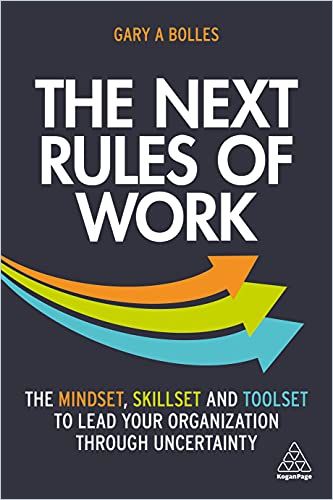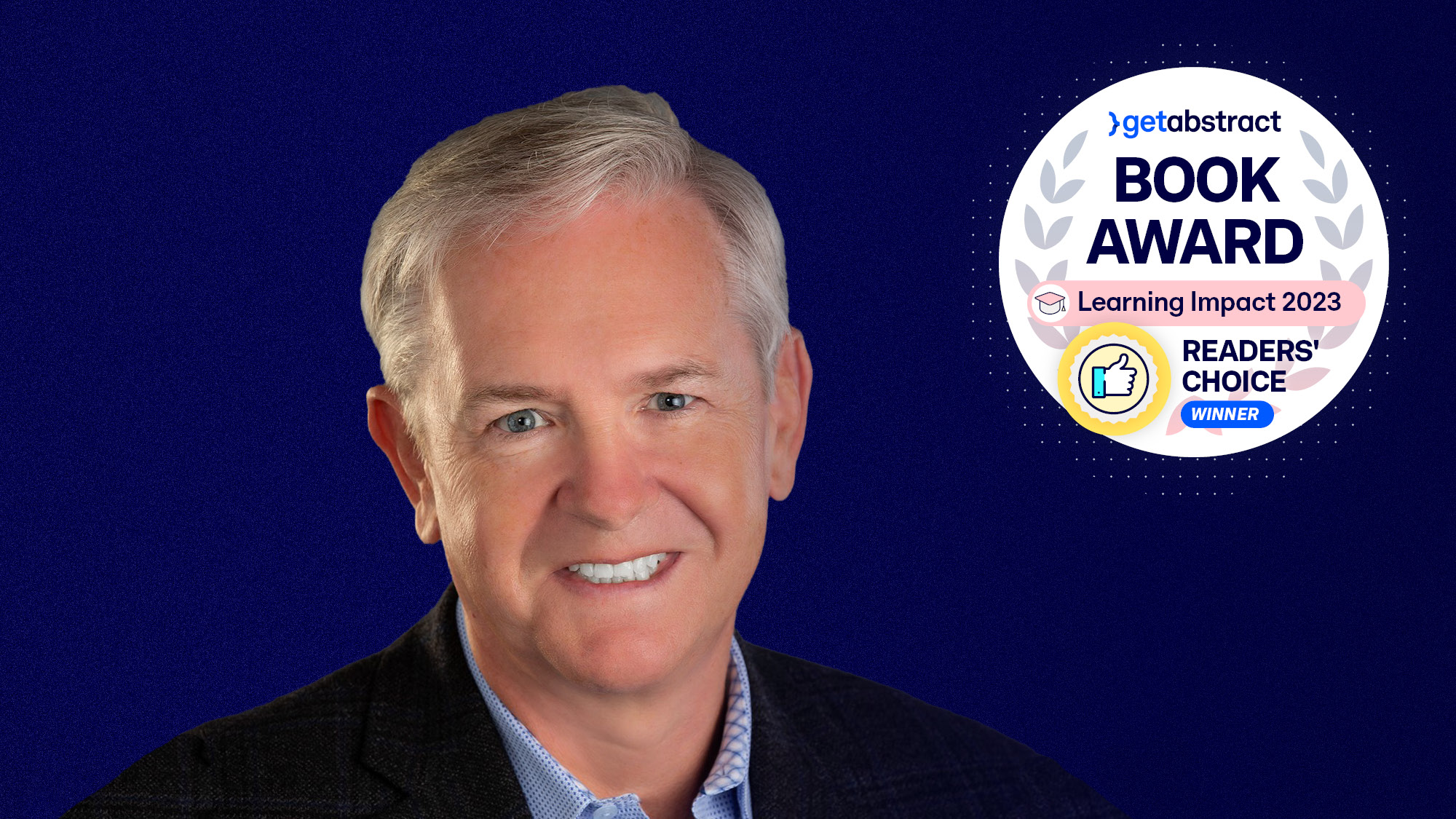“Empathy Is One of the Most Incredible Superpowers.”

Gary, the central thesis of your new book, The Next Rules of Work, is that the world of skills is changing so rapidly that many acquired skills are barely relevant by the time you can spell their exact titles. So, is the age of specialists over and the age of generalists begun?
Gary A. Bolles: The answer is yes…
…and as a graduate of literature, I’m really glad to hear that.
(Laughs.) So first off, it’s essential to recognize that skills transitions have happened throughout history. And it’s critical to realize that needs for different skill sets have continually changed – but those skills can be categorized into two separate buckets. On the one hand, some skills are anchored in a particular field or industry, which I call “Know” skills: skills with specific bodies of information that are useful in one context and not in another. On the other hand, we have “Flex” skills: transferable skills that are valid in a range of different situations. So, think of a specialist as being very deep in certain Know skills, and think of that generalist as being very good with a range of Flex skills. Now, while bodies of knowledge have often shifted over time, the shelf life of information has been significantly reduced in a variety of industries. That process is accelerating dramatically, and it gets harder and harder for many people to cope with such disruptive change.
Even for professionals long considered “untouchable?”
Many of them are pretty explicitly affected. Take, for example, your knowledge of being a lawyer or a doctor. Those Know skills are changing at such a dramatic pace that even these specialists need to develop their Flex skills much more rapidly.

That’s why IBM, for example, had an approach to this for some time, which they called T-shaped skills or T-shaped professionals. They said: You need to develop mastery of something, to dive deep in one or more arenas. But then, you also need to build more flexible skills that are usable in a range of situations – because you’ll need them to solve problems you’ve never encountered before. This applies to all of us now. You’ll have to have a “portfolio” of those two skills-types. Each of us will have different periods in our lives where we will go deep on something. We need to go deep on something, to stand out, to demonstrate mastery. But we must all learn many of those more general Flex skills to continue to be relevant.
With necessary skills changing so quickly, “mind-set trumps skill set,” you say. In other words: Skills are helpful, but they’re not everything. An employee with the right skills but the wrong mind-set won’t thrive in an organization that values adaptability and creativity. Can you briefly explain this with a concrete example?
Suppose someone who leads in an organization sees that you have what they believe are all the skills you need to do a new job. But you question your abilities, and your initial reaction is to turn down the unique job opportunity. There, you might have all the skill set, but you have none of the mind-set. But:
People with an optimistic and can-do kind of mind-set can often overcome whatever lack of skills they may need to make up for. Your mind-set, therefore, becomes either the accelerator or the barrier to meaningful change.
Gary A. Bolles
There is currently a lot of talk about mind-sets: growth mind-sets, curiosity mind-sets, learner mind-sets, etc. But underneath that, optimism is always mentioned as well, as in your answer. Would you say that you can forget all the mind-set talk if you are not naturally optimistic?
My father discovered this 50 years ago with his book What Color Is Your Parachute? The first deliverable for any individual when going through a meaningful change in their lives is hope. I use the word “agency,” and that is the belief that there could be a positive outcome if you take action. If you have been out of work for an extended period or a long illness, it’s very, very hard to have the agency to believe that there’s going to be a positive outcome. So, when you say “optimism,” some people react negatively to even saying you should be more optimistic. To find what can be helpful is to focus on what Dr. Carol Dweck calls a “growth mind-set” and accept that you are a constantly changing and developing human being. Yes, you can teach an old dog new tricks! Yes, you can learn new skills! Yes, you can take advantage of new opportunities! Yes, you can help people get examples in their own lives very quickly! And once you see those examples a couple of times, that becomes a new mind-set.
So, what can you do as a manager – in concrete terms – to put this into play for your employees?
I’ll give you three steps. Step one: If you are what is traditionally called in the Old Rules of Work a manager – which in The Next Rules of Work I call a team guide – you must embrace that mind-set, which is that you are there to empower others to be able to solve problems. The second step is to encourage everybody on your team to have that growth mind-set. One of the best ways to do that is to help every individual to have a “North Star” or a “Southern Cross” that is guiding their career decisions as lifelong learners, to embrace the opportunity to develop new skills. Help them find their North Star! The third step is to bake all that into regular conversations, interactions and goals. From there, it will always be part of the dialogue, not just something that will be treated as a once-a-year 360-degree review. Encouraging growth is going to be considered a daily deliverable.
What can this look like in concrete terms in day-to-day work?
I have a thought exercise in the book that I suggest for team guides on how to do this practically. Any given Monday, you come in and say: I’m not sticking around, so you team members list all the problems that you as a team deal with on a weekly basis, and put them on Post-its on a whiteboard – and then the team guide leaves. Tuesday, you come in and say: Now, list all the tasks that you currently perform, on different Post-its – and again you leave. The third day, Wednesday: Tell the team, list all the skills that you use. The fourth day, Thursday: Now, take all those different problems and tasks and skills and reorganize them based on the best way possible for you all to solve your team’s issues. And then, on Friday, tell them: OK, this is your new way of working. (Laughs.) That is a specific set of steps you could go through. It’s a thought exercise, but there’s no reason you shouldn’t be thinking about how you empower those workers to be able to define and solve problems as a team.
This means that the time for annual performance reviews is also past. If everything changes quickly, must there also be faster feedback and adjustments?
Yes.
I don’t even use the word ‘performance’ anymore. You can get toxic cultures that are so performance-oriented that it’s about making people robots and delivering just a few more dollars or euros to your shareholders. Instead, I talk about effectiveness.
Gary A. Bolles
You should have constant Effectiveness discussions with every member of your team. Every worker wants to be effective in their work, they want to be able to set and achieve their goals. Think of continuous Effectiveness discussions as sometimes formal – where you’re walking through goals and accomplishments, possible barriers, and how to help the other side overcome those barriers as we advance – and sometimes just as hallway conversations, quick Zoom conversations or a coffee together. “How’s it going? What’s the finger on the pulse for how you feel? Are you accomplishing your goals?” And: “Tell me one barrier that I can help you with right now.” That is a different mind-set for both the worker and the team guide.
I love such – sorry – managers. But on the other hand, if you have a manager who is more the old-world-type of guy who was successful the last 30 years just the way he did it, what can you say to this executive if they are that barrier they asked about?
This has been true throughout time: When we worked on farms and factories, the old rules of work consisted of outright horrible practices that were baked into the processes we’ve all inherited. And some of these are just characteristics of humans. Having this in mind, start a conversation about the best ways that you’d like to solve problems that the team guy or traditional manager is responsible for. Try to show that the effectiveness of a team – the outcomes, the key results, all the things that they have baked into whatever the system is for delivering value to the organization’s stakeholders – could benefit from a different approach. Show them how you can help provide solutions to those problems more effectively.
But why would that help me?
Because that’s precisely what that manager, the woman or the man who has been doing the same thing for 30 years, is trained on. They have learned how to manage risk. How are they perceived in the organization? How does the team deliver on the value it’s supposed to provide? How do they get the best work out of their workers? You must help them by crafting a new agreement about how you will manage that risk for them – and what your reward will be. Let me give you an example. The first professional job I had was where I went to Silicon Valley. I decided I would get into this computer thing when I was in my mid-20s.
I approached the head of a software test team and said: Listen, I think I can do this job. But I can’t work at this pay. So, double the salary for one week. And if I suck at the position, fire me. The head said: OK, let’s give it a shot. Because she had nothing to lose. And I ended up becoming a team lead. And then, when that project was finished, I eventually became the head of the training department for the company.
Gary A. Bolles
This leads us straight to the crucial new skills at the intersection of skill sets and mind-sets that define failure and success in the new world of work. As you say: Problem-solving stands out as essential here.
That’s right. Organizations hire workers, above all, for their ability to solve problems.
But this also means that managers must relinquish power. They are no longer the all-knowing experts from the old working world – which they never were. Instead, they become coaches on the way to solving problems. But what interest do they have in seeing themselves that way? How do managers still justify their hierarchical standing and salary? What do they have that no one else in the company or team has?
Compensation is simply a reflection of the organization’s current process for recognizing the value you create for the organization’s stakeholders. If the knowledge of value changes, so changes the compensation. A team guide becomes highly invested in the effectiveness of the team – and the team guide should be well-compensated for those results, not simply because they occupy a place in the hierarchy. There are already a lot of differences when it comes to leadership and compensation models around the world. For example, I just did a talk for a Danish ministry last week where they talked about much more team-oriented approaches with team guides instead of leaders, and this approach is very much more common in the Nordic countries. But elsewhere, too, there are many examples of how hierarchies are declining, or rather, how they are gradually being dismantled, so this “next” model is no longer so atypical. Compensation will follow this trend.
Can you think of an example?
Think of the player-coach model in sports: You were an outstanding player, and then you became the coach. No one wonders about your expertise, because no one questions that you know how to solve problems in that realm. After all, you’re an expert on it, or very well-versed. After we realize that players can be good coaches, we will also recognize that they don’t necessarily have to earn umpteen times what the others earn.
Where hierarchies are dismantled, pay grades are also dismantled – anything else would be nuts. So, leading is not necessarily connected to compensation.
Gary A. Bolles
Traditional organization charts provide social signals for maintaining hierarchies, but salary and power don’t necessarily need to correspond. CEO compensation in the United States jumped from a 20:1 ratio to the average worker in S&P companies 50 years ago, to 60:1 30 years ago, to now 300:1. CEOs today make 300 times the amount of money that the average worker makes in big companies. But that doesn’t mean it’s become a 300% times more valuable job. That’s out of whack.
Well, that might be true. But it doesn’t make the transition to the new model easier.
That’s why next-generation organizations already unbundle positions and compensation. Instead, they’re embracing processes to encourage personal power over positional power to train those who lead in the organization. That does two things: First, it makes it a more equitable organization. It means that simply because of longevity in place in the hierarchy, you’re not necessarily making more money than those who contribute more value to the organization’s stakeholders. And the second is it prepares those who lead in the organization for understanding that you need superstars. You rely on people who are tremendously effective at their work. And if they’re compensated better than you, even though you were higher up in the hierarchy, it’s better value for the organization, and you, too, will make more over time.
This leads us to the next critical skill at the intersection of skill sets and mind-sets: creativity. But even in organizations with flat hierarchies, some superstars cannot be identified. For example, how do you reward someone who helped launch a completely new, successful product with his or creative idea in a random meeting better than his or her superior?
It’s about managing risks. If you were guaranteed that the next crazy, wacky idea that one of your workers came up with was the next billion-dollar product for the company, you would take the risk. But it’s because you don’t know that it could lead to that kind of outcome that you often dampen down that creativity at the worst possible time. Creativity at the front end of projects is where you need to continue using design thinking, rapid prototyping, moonshot thinking, and so on.
At the front end of projects, you need to encourage the most possible creativity in thinking of new ways to solve problems – and then, towards the farther down steps in a project, it’s creativity around process, more than solutions. How do we do this better? How do we increase the value? That’s what you need to do as a team guide to encourage creativity at the most appropriate moments.
Gary A. Bolles

The good news is that you can foster creativity by valuing people and ideas – not just the entities they produce or the profit they generate. The final skill keyword is, therefore: empathy. Maybe the most “human” skill of them all. But how does that fit with the parts of your book where you focus on the measurability of outcomes? To what extent do empathy and quantitative measures of success get along?
Satya Nadella, the CEO of Microsoft, absolutely agrees that empathy is the most human skill, but it’s actually one of the most incredible superpowers. And no, it is not antithetical to rational decision-making or OKRs and KPIs. Think of it this way: As a team guide, you thrive on good information. If you don’t empathize with other human beings, you’ll have far less information to work from. That’s why the first step in design thinking is empathy. Entrepreneurs empathize with the needs of a customer, and then continually iterate the solution until it matches what that customer’s lived experience is. So, think of it as just more information. Having empathy for the people who work with you, your co-workers, others in the organization, the organization, stakeholders, and even the planet is all about gathering more information as part of the calculus of the decisions you make. But even more important, it’s about honoring the whole human being.
You write that bosses don’t bother to learn about their employees’ personal lives under the old work rules. In the new world you describe, leaders need to know about their workers’ challenges outside of work, and they need to create a new model geared toward supporting the employee as a whole person.
That’s absolutely right.
Unfortunately, what sounds good can also quickly become encroaching: How do you find the right balance here so that a boss doesn’t also become a privacy-ignoring micromanager?
Leaders and workers in the new world of work must have the kinds of agreements that are based on trust. Organizations, on their end, need to build a consistent mind-set, which we often call culture. Under this umbrella, there’s a bunch of agreements between team guides and workers throughout the organization about that dynamic. For example, you see that in the hybrid world of work, we let life and work bleed together. They’re almost inseparable in many cases. Some people love that, but for some people, that’s uncomfortable.
So, it’s crucial to have the kinds of agreements where workers are empowered to define what they need, what they require to be effective in their work and what the boundaries need to be. Team guides need to honor that and continually be seeking out the comfort level of workers.
Gary A. Bolles
Because the power dynamic favors the team guide, it selects the manager or the leader as the one that defines it, but it needs to be co-created to secure the necessary well-being for both parties.
You would say both partners need to write these things down and then always go back to these rights and boundaries if there’s a problem or a misunderstanding?
Yes. They both get the most out of these sets of agreements. However, they must be constantly updated due to the continually changing nature of our lives. And the team guide needs to be the one who constantly invites updates to that set of agreements. I know that’s putting a lot on the team guide’s shoulders. But believe me, you will get far better results in the future if you practice this kind of openness and transparency – not just for your team members, but with the people you work for, as well.
About the Author:
Gary A. Bolles is the Chair for the Future of Work at Singularity University and a partner at Charette LLC, a San Francisco consulting firm. He co-founded eParachute.com – inspired by his father’s best-selling classic, What Color Is Your Parachute?









